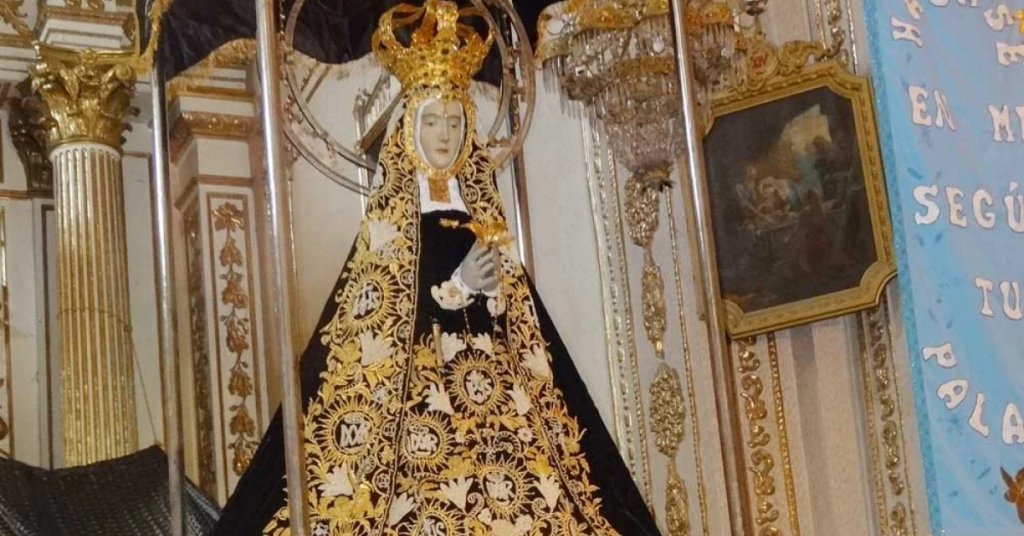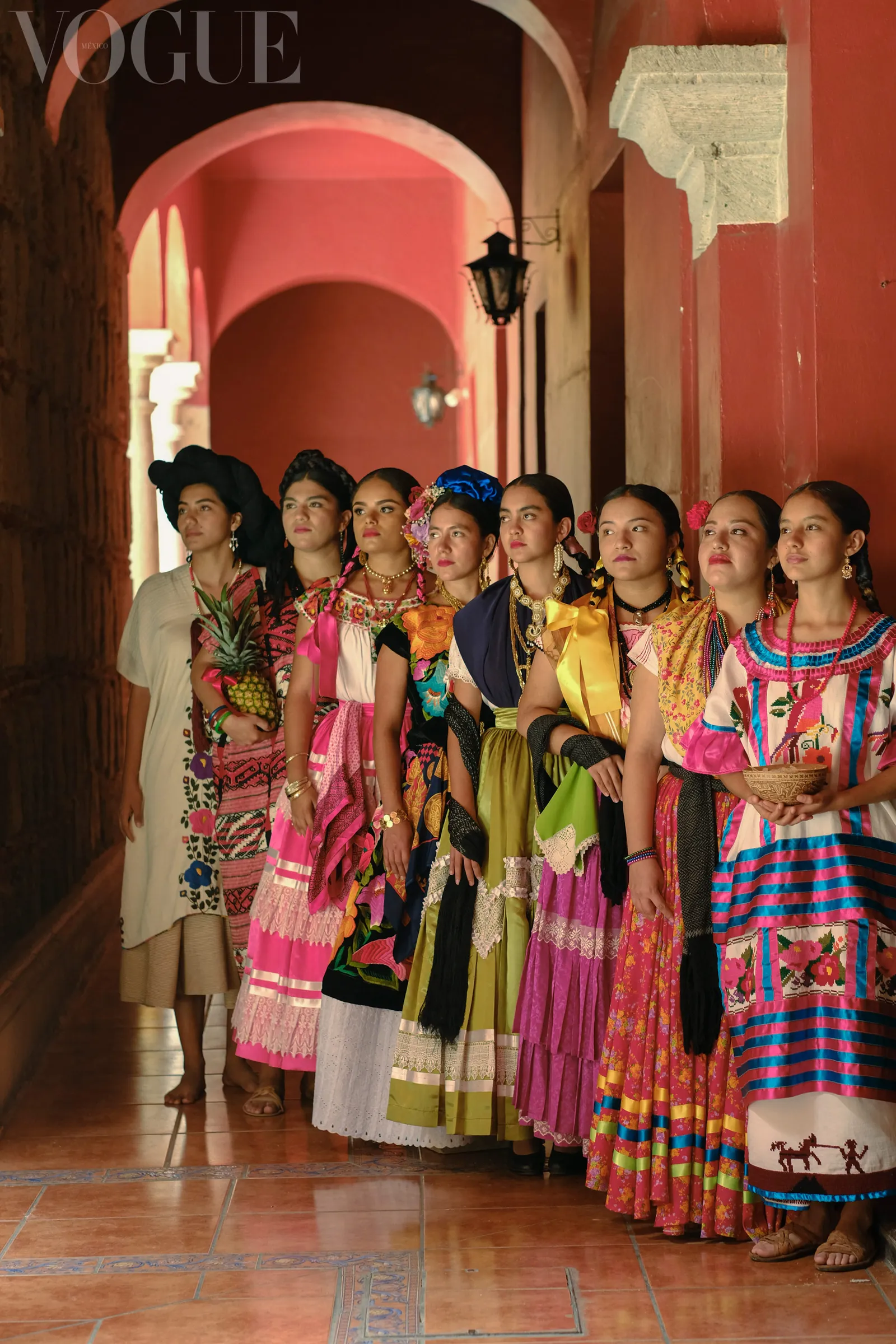Mystical History

This event marked the destiny of the image, as it was interpreted as a divine sign that this was the place where it should rest and be venerated. Since then, the Basilica of Our Lady of Solitude became a place of great religious importance and devotion, where thousands of believers come to pay homage and seek solace in the Virgin of Solitude.
This legendary story, full of mystery and symbolism, adds an element of intrigue and fascination to the history of the Virgin of Solitude. Her arrival on the back of a mule, the exhaustion of the mule in the precise place where the basilica stands, are elements that have perpetuated devotion and mysticism around this religious image. It is a tale that has been passed down from generation to generation, leaving an indelible mark on the religious and cultural history of the region.
The image, which was stored in a wooden box along with a figure of Christ, when the authorities arrived, upon opening the container in which the image was found, they made the decision to protect it and give it a dignified place. For this purpose, they undertook the construction of a majestic basilica in the Baroque style, whose works began in 1682 under the supervision of chaplain Fernando Méndez. The construction of this basilica extended until 1689, and was finally consecrated in the year 1697 by Bishop Isidro Sariñana y Cuenca.
The story highlights the importance given to the image and how the necessary efforts were undertaken to provide it with a suitable space for worship and veneration. The construction of the basilica, in an impressive architectural style like the Baroque, reflects the desire to create a grand and significant place to house the image.
The dedication and time invested in the construction of the basilica demonstrate the importance attributed to devotion to the image and the desire to provide it with a suitable home. The consecration by the bishop in 1697 marked a milestone in the history of the basilica, consolidating its status as a sacred place and of religious importance in the region.
Together, this story transports us to a distant past where local authorities recognized the value of the image and made efforts to provide it with a dignified space through the construction of the impressive basilica, a monument that endures as a symbol of faith and devotion.
Beloved Basilica for the People of Oaxaca

The history of the Virgin of Solitude is a narrative that has captivated the hearts of the inhabitants of Oaxaca over time. Over the years, the sorrowful image of the Virgin, with her hands clasped in prayer, has managed to conquer the devotion and veneration of the faithful.
One of the highlights of this history is the richness of the Virgin’s garments. As the years go by, the faithful themselves have taken care of making costumes and garments for the image, enhancing its beauty and giving it a unique character. These dresses are a tangible testimony of the faith and love that the people of Oaxaca feel for the Virgin of Solitude.
A significant moment in the history of the Virgin of Solitude was her pontifical coronation on January 18, 1904. This event marked a significant milestone in the relationship between the faithful and the sacred image, further strengthening her position as a symbol of faith and hope in the region.
The importance of the sanctuary where the Virgin is located has also been increasing. In 1960, it was granted the status of Basilica, giving it greater relevance in the religious sphere. This recognition reaffirmed the importance of the Virgin of Solitude as a central figure in the spiritual life of the community.
A moment of great emotion was experienced in 1979 when Pope John Paul II visited the sanctuary of the Virgin of Solitude. This papal visit was a transcendent milestone for the people of Oaxaca, who felt honored and blessed by the presence of the Holy Father in their land, reaffirming the devotion and love they profess to their beloved Virgin.
Cultural Beauty

The Basilica of Our Lady of Solitude is an architectural gem that captivates all who visit it. Its design features a Latin cross plan and is mainly built with green and yellow quarry stone, giving it an elegant and distinctive appearance.
The facade of the basilica is a magnificent screen composed of three bodies and an upper pediment. In the first body, a semicircular arch flanked by Doric capital columns stands out. Additionally, on the first two levels, there are niches housing sculptures of important religious figures such as Saint Peter, Saint Paul, Saint Augustine, and Saint Rose of Lima, the first saint of America.
In the second level of the facade, a relief depicting the Virgin Mary in her suffering, kneeling at the foot of the Holy Cross, is appreciated. In the background, a sketch of the city of Jerusalem can be glimpsed, evoking the historical and religious context in which the crucifixion of Jesus took place. Additionally, on the sides of this level are the sculptures of two archangels, adding a celestial touch to the composition.
In the third body of the facade, the moment of the Annunciation is represented, with the figure of the archangel Gabriel. On the sides are the sculptures of Saint Nicholas of Bari and Saint Nicholas of Tolentino, prominent saints of the Catholic tradition. At the top of the facade is the representation of the Assumption of the Virgin Mary into heaven, an event of great importance in the Christian faith.
The basilica also features carefully designed structural elements to withstand seismic movements in the area. It has two barrel vaults and an octagonal dome covered in fine tiles, enhancing its beauty and contributing to its solidity.
Undoubtedly, it is a must-visit destination for those seeking to immerse themselves in the beauty and devotion of the Catholic faith.






















